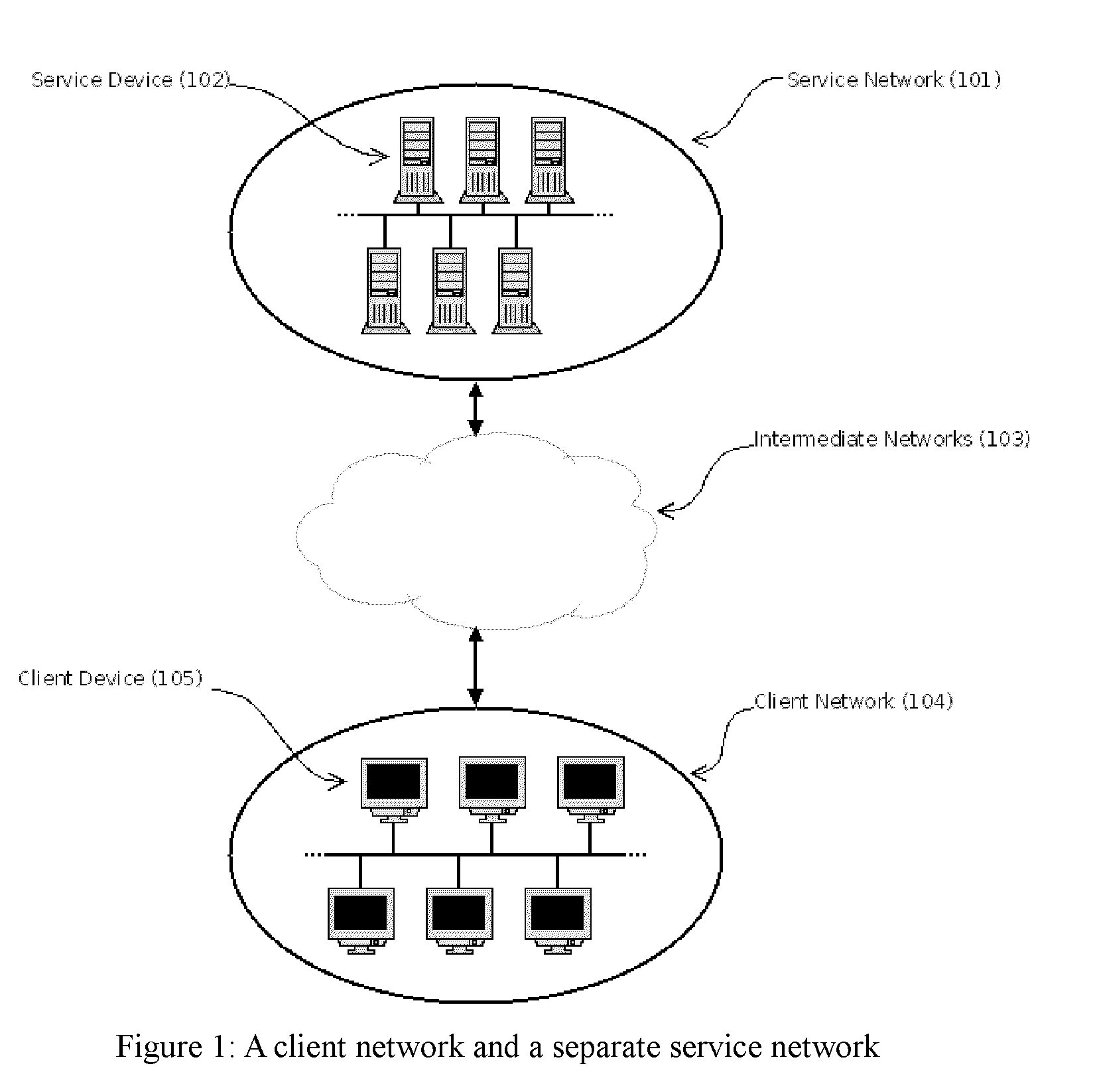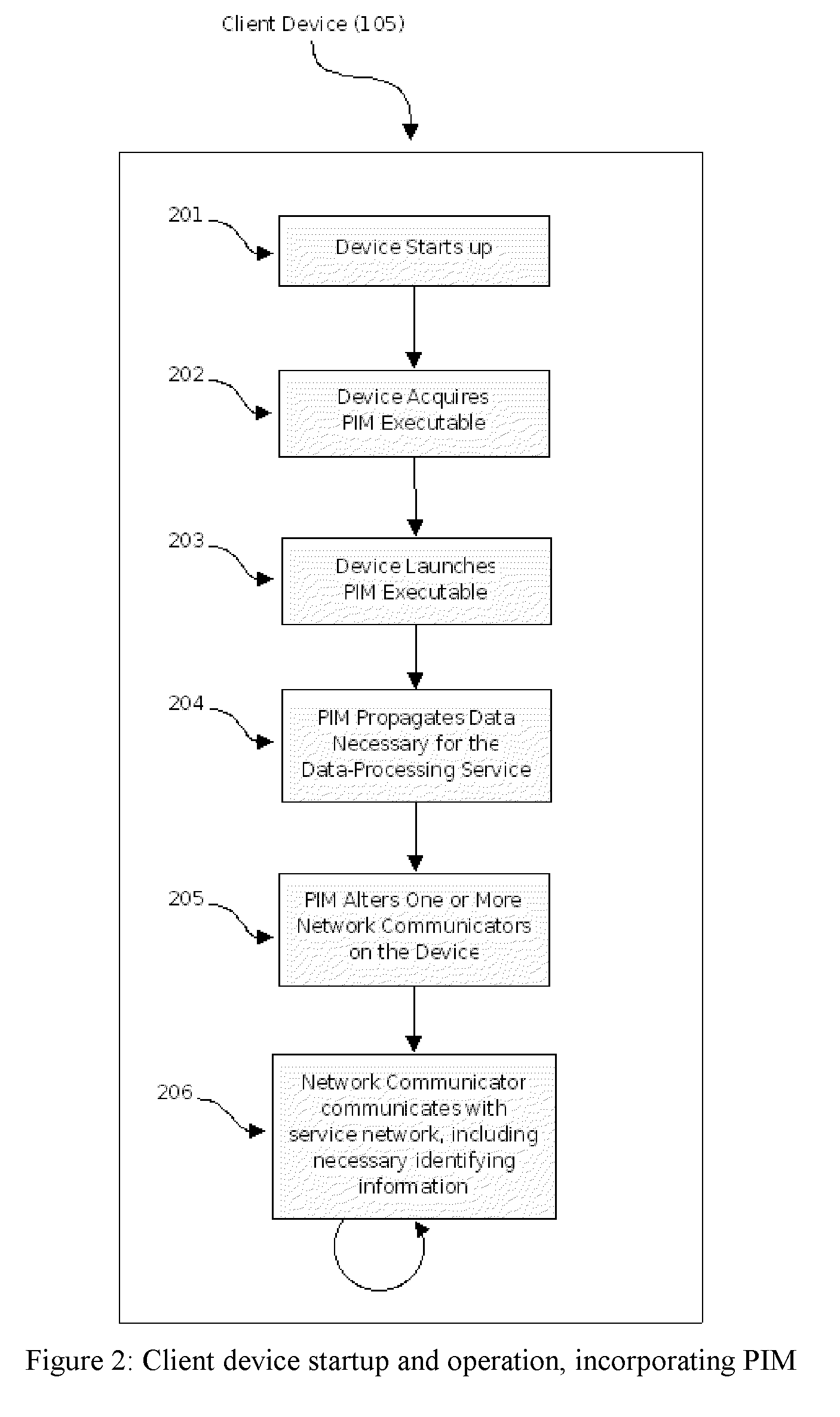Method for the provision of a network service
a network service and network technology, applied in the field of network communication, can solve the problems of providing data processing services, still present maintenance costs, and information available to the workstation may not be available to the service device, and achieve the effect of reducing processing time costs
- Summary
- Abstract
- Description
- Claims
- Application Information
AI Technical Summary
Benefits of technology
Problems solved by technology
Method used
Image
Examples
Embodiment Construction
[0029]The present invention is concerned with the provision of a data-processing service by service devices on a service network, to client devices on a client network, where information accessible only on the client network is required by the service devices for the provision of the service. The invention provides a means to propagate such information with minimal usage of bandwidth, client computing resources, or service computing resources, and with minimal changes necessary to the client device or network. In the following description, as an example, we take the case of a web-filtering service, which restricts certain users' access to the Internet according to some policy, and therefore needs to be aware of users' identities, such information not being transmitted by web-browsers. It will, however, be evident that various modifications and changes may be made to such a specific exemplary embodiment without departing from the broader spirit and scope of the invention as set forth...
PUM
 Login to View More
Login to View More Abstract
Description
Claims
Application Information
 Login to View More
Login to View More - R&D
- Intellectual Property
- Life Sciences
- Materials
- Tech Scout
- Unparalleled Data Quality
- Higher Quality Content
- 60% Fewer Hallucinations
Browse by: Latest US Patents, China's latest patents, Technical Efficacy Thesaurus, Application Domain, Technology Topic, Popular Technical Reports.
© 2025 PatSnap. All rights reserved.Legal|Privacy policy|Modern Slavery Act Transparency Statement|Sitemap|About US| Contact US: help@patsnap.com



